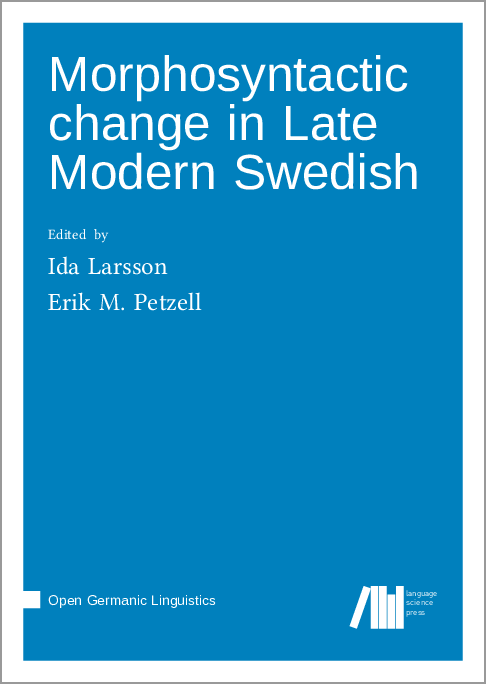In der letzten Zeit sind u.a. diese frei verfügbaren Titel erschienen:
Stop! Hey, what’s that sound? The representation and realization of Danish stops
Rasmus Puggaard-Rode
https://doi.org/10.48273/LOT0631
This dissertation investigates the phonetic and phonological characteristics of Danish stop consonants, with particular focus on their diachronic origin and synchronic variation. Using data-oriented and statistical methods, it fills empirical gaps in phonetic research on Danish stops and in doing so contributes to our understanding of the overall sound system of the language.
The dissertation reports the results of a number of studies which combine spontaneous speech corpora with state-of-the-art techniques in statistical modeling. Topics considered include intervocalic voicing, which is shown to be rare in all stops and in almost all phonetic contexts, and affrication of aspirated stop releases, which is shown to be strongly dependent on place of articulation. The dissertation also investigates a range of phonetic parameters in a legacy corpus of traditional varieties of Jutland Danish, with the results showing systematic regional variation even in minute acoustic details.
Data and code can be found on DataverseNL: https://doi.org/10.34894/OSGTR8 and https://doi.org/10.34894/FJKFD1.
Morphosyntactic change in Late Modern Swedish
Ida Larsson & Erik M. Petzell (Hrsg.)
https://langsci-press.org/catalog/book/329 & https://doi.org/10.5281/zenodo.5482405
This volume explores morphosyntactic change in the Late Modern Swedish period from the 18th century and onwards. This period is interesting, for a number of reasons. This is when Swedish is established as a national standard language. New genres emerge, and the written language becomes more generally available to all speakers. We also sometimes find diverging developments in the different North Germanic languages, and some of the much-discussed differences between Danish, Norwegian and Swedish are established during this period. In addition, during the 19th and 20th centuries, the traditional dialects undergo more dramatic changes than ever. Yet, the Late Modern Swedish period has previously received fairly little attention in the syntactic literature. This volume aims to remedy this, with studies that cover several different grammatical domains, including case and verbal syntax, word order and agreement, and grammaticalization in the nominal domain. The study by Cecilia Falk investigates the possibility of promoting an indirect object to subject in a passive, that emerges during the period. A chapter by Fredrik Valdeson studies change in the use of ditransitive verbs, from a constructional perspective. Three chapters are concerned with word order change. The study by Ida Larsson and Björn Lundquist investigates the development of a strict word order in particle constructions. Adrian Sangfelt studies the possibility of having adverbials (and other constituents) between the separate verbal heads in complex VPs in the final stages of the shift from OV to VO order. Erik M. Petzell investigates embedded verb placement and agreement morphology in the Viskadalian dialect, which on the surface seems to contradict the Rich Agreement Hypothesis. Mikael Kalm discusses the emergence of different kinds of adverbial infinitival clauses in the standard written language compared to Övdalian. Finally, the study by Lars-Olof Delsing is concerned with a case of grammaticalization in the nominal domain, specifically the development of the gradable adjectives mycket ‘much’ and lite ‘little’ into quantifiers.
The Poetic Edda: A Dual-Language Edition
Edward Pettit
https://doi.org/10.11647/OBP.0308
This book is an edition and translation of one of the most important and celebrated sources of Old Norse-Icelandic mythology and heroic legend, namely the medieval poems now known collectively as the Poetic Edda or Elder Edda.
Included are thirty-six texts, which are mostly preserved in medieval manuscripts, especially the thirteenth-century Icelandic codex traditionally known as the Codex Regius of the Poetic Edda. The poems cover diverse subjects, including the creation, destruction and rebirth of the world, the dealings of gods such as Óðinn, Þórr and Loki with giants and each other, and the more intimate, personal tragedies of the hero Sigurðr, his wife Guðrún and the valkyrie Brynhildr.
Each poem is provided with an introduction, synopsis and suggestions for further reading. The Old Norse texts are furnished with a textual apparatus recording the manuscript readings behind this edition’s emendations, as well as select variant readings. The accompanying translations, informed by the latest scholarship, are concisely annotated to make them as accessible as possible.
As the first open-access, single-volume parallel Old Norse edition and English translation of the Poetic Edda, this book will prove a valuable resource for students and scholars of Old Norse literature. It will also interest those researching other fields of medieval literature (especially Old English and Middle High German), and appeal to a wider general audience drawn to the myths and legends of the Viking Age and subsequent centuries.



